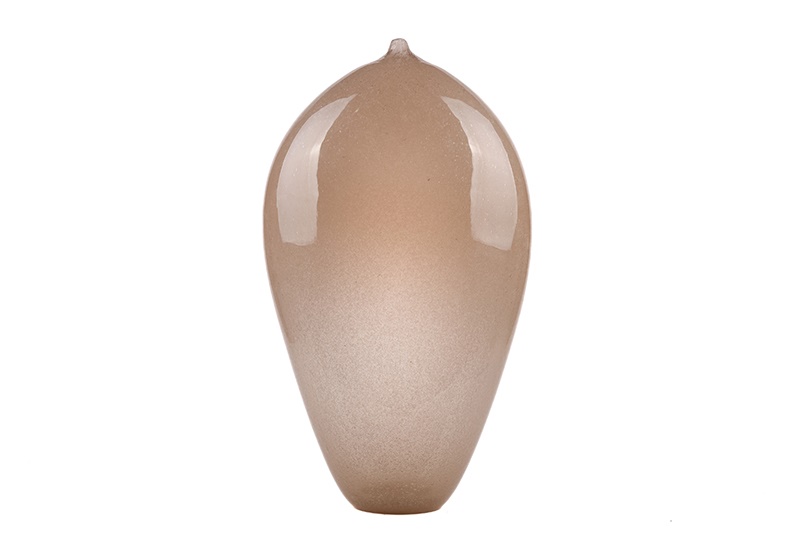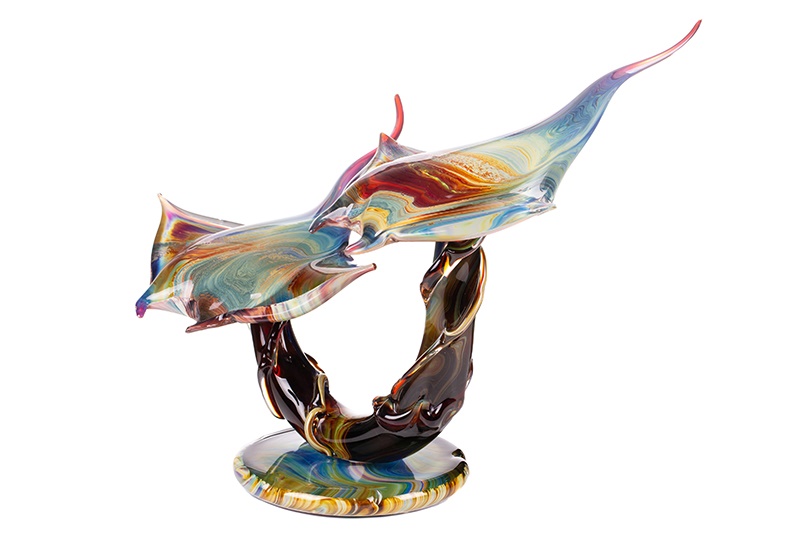Is Murano Glass Worth Anything?
We identify the characteristics which influence the value of a piece
09/11/2023
Frequently appraised in the hundreds to thousands of pounds category, it is fair to say that Murano glass is certainly valuable. We take a closer look at why Murano has a value and what characteristics ultimately influence just how valuable a piece will be.
Murano refers to a type of glassware that originates from the Venetian Island of Murano in Italy. It has a rich history dating back to the Romans and is renowned for its exquisite craftsmanship and unique techniques. Made from a fusion of silica, soda, lime, and potassium which are melted together in a special furnace at a temperature of 1500°C to reach a liquid state. Very fine layers of 24K gold or sterling silver are often added, together with other minerals to create vibrant colours which never fade. The resulting liquid is then mouth-blown and hand-shaped by master glassmakers using techniques such as Millefiori, Sommerso, Reticello, Zanfirico, Filligrana, Bullicante, and many others.
Carlo Moretti for Murano, six Italian art glass Champagne flutes
A brief history:
By the 1200s Venice had become the world’s centre for glassmaking, indeed the largest industry within the city, necessitating the formation of the Glassmakers Guild who passed a number of laws to protect the trade. Initially the import of foreign glass as well as employment of glass workers from outside the city, was banned. Venetian glassmakers were forbidden from leaving the city in fear of disclosure of trade secrets. In 1291 another law was passed, under the guise of preventing a disastrous fire in a predominantly wooden city, all glass making furnaces were moved to the island of Murano, forcing glassmakers within the city to relocate alongside. To encourage the very best artisans and tradesmen, the workers were imbued with a strong social status permitting their daughters to marry into Venetian nobility, securing the blood line of Venice’s profitability. Murano remains home to expert glassmaking artisans to this day, including one of the oldest businesses in the world, Barovier & Toso, who were founded in 1295.

Andrea Zilio, a Murano glass vase
Estimate £400-£600
Murano glass held the monopoly of the market for centuries, peaking in the 15th and 16th centuries before starting a slow decline following the emergence of other glassmaking in France and Bohemia. It was during the Aesthetic Movement that the revival of Murano glass began. The Murano pieces produced from 1895 embraced the emerging trend of “art for art's sake” and traditional craftsmanship was used alongside bold new techniques.
Collectors around the world covet Murano glass as a piece of art. Its intricate designs, vibrant colours, and delicate details make it highly sought after. Many collectors consider it an investment due to its potential appreciation in value over time.
 A large impressive Murano glass bowl with scalloped edge with gold and opaque air twist canes in pink and blue
A large impressive Murano glass bowl with scalloped edge with gold and opaque air twist canes in pink and blue
Estimate £300-£500
The value of Murano glass depends on various factors such as who made it, when it was made, the techniques used, and its rarity. Pieces created by renowned master glassmakers or those from specific time periods can fetch higher prices due to their historical significance and craftsmanship.
If you are considering investing in Murano glass or purchasing a piece for personal enjoyment, conducting thorough research is essential. Familiarise yourself with different styles, artists, and historical periods to make informed decisions about your purchase. Consulting with experts or reputable dealers can also provide valuable insights into the authenticity and value of specific pieces.

Mirco Bastianello, Murano glass sculpture of two manta rays
Estimate £200-£300
Murano glass holds significant value both as a work of art and as an investment opportunity. Its rich history, skilled craftsmanship, and desirability among collectors contribute to its enduring appeal in the market. For those with a penchant for Murano glass, Dawsons’ upcoming Fine Art & Antiques sale on 30th November features a large collection of Murano glass including a vase by Andrea Zilio, two impressive bowls by Luca Vidal and a sculpture by Mirco Bastianello.
read more
How Do I Know if My Lalique is Real?
Do you have any Murano glass that you are considering selling?
With a global audience of millions, Dawsons can ensure you achieve the best price at auction.
Get in touch with one of our Specialists today for sales advice, we would be delighted to help.
